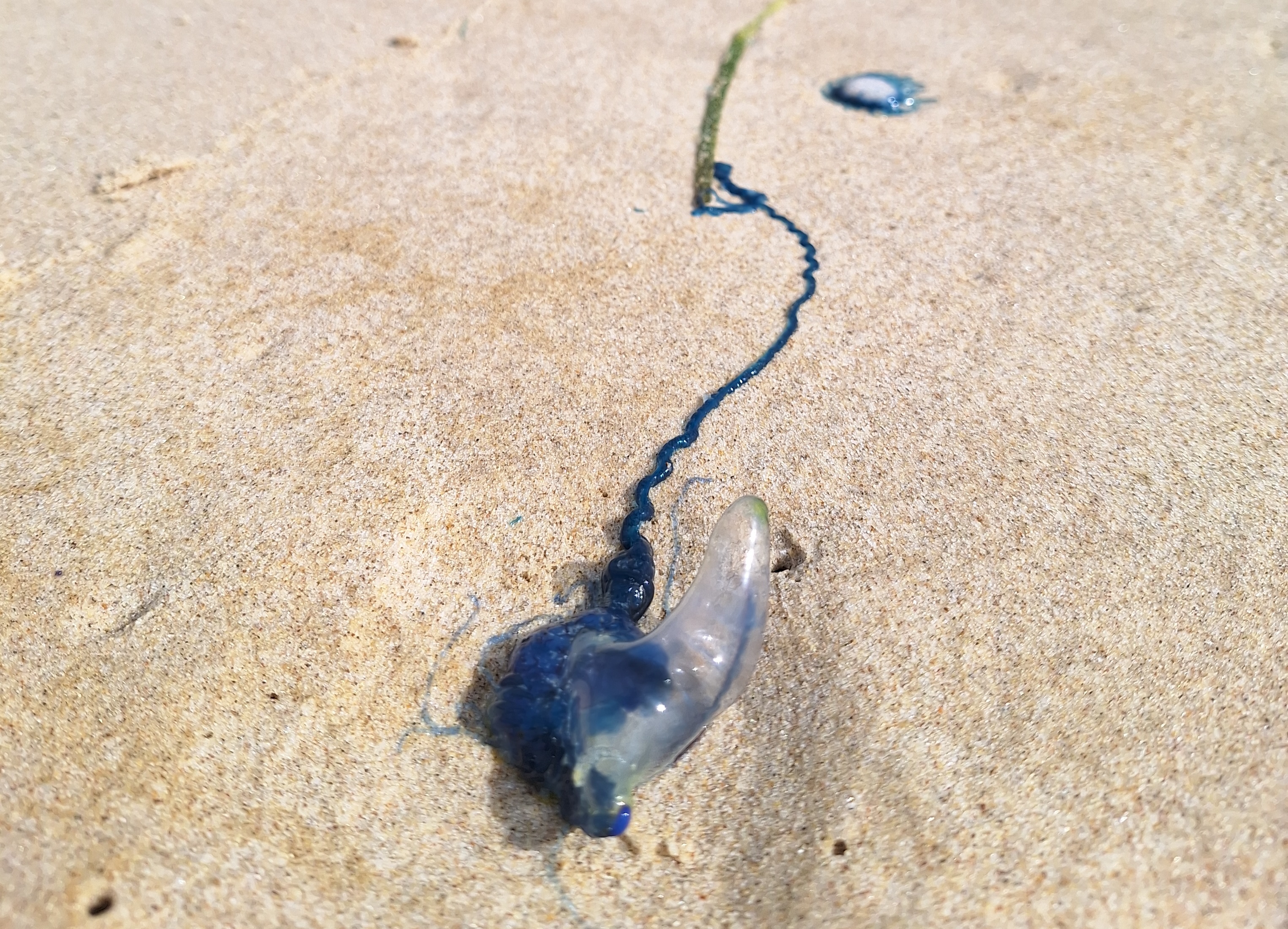Media release
From:
Not one, but four – global study reveals the hidden species diversity of bluebottles
Long believed to be a single, globally distributed species drifting freely across the open ocean, the bluebottle – also known as the Portuguese man o’ war – has been revealed to be a group of at least four distinct species, each with its own unique morphology, genetics, and distribution.
An international research team led by scientists at Yale University, and Australian researchers at the University of New South Wales (UNSW) and Griffith University, uncovered this biodiversity by sequencing the genomes of 151 Physalia specimens from around the world.
The study, published in Current Biology, found strong evidence of reproductive isolation among five genetic lineages, challenging the long-held assumption that the open ocean supported single, well-mixed populations.
“The genetic data clearly show they’re not only different, they’re not even interbreeding despite overlapping ranges,” Professor Pitt said.
“The bluebottle is uniquely suited to long-distance travel, using its gas-filled float and muscular crest to catch the wind and sail the sea surface.”
Using an integrative approach, the team matched genomic lineages with four distinct physical forms identified from thousands of citizen-science images submitted to iNaturalist.org.
These morphologies – originally proposed as separate species in the 18th and 19th centuries but later dismissed – have now been verified by modern genomic evidence.
The study describes Physalia physalis, P. utriculus, and P. megalista, alongside a newly identified species, Physalia minuta, found near New Zealand and Australia.
Each species is further subdivided into genetically distinct subpopulations shaped by regional winds and ocean currents, according to advanced ocean circulation modelling.
“There's this idea the open oceans all connected, and it's just one species of bluebottle and they're all globally connected because they drift with the wind and the current,” Professor Pitt said.
"But that's absolutely not the case.
“And what's really interesting in Eastern Australia is that we have multiple species that have evolved despite potentially co-existing.
“So why is it that they developed into separate species when you think they'll all be in the same environment, mixing up together? What was the selection pressure that led to the differentiation of the species?”
The researchers said future investigations into the physical, environmental, and biological processes that generated and maintained this genetic variation would be crucial in recalibrating science’s expectations towards open-ocean biodiversity.
In 2022, UNSW were awarded an Australian Research Council Linkage grant for the project ‘Bluebottle dynamics: towards a prediction tool for Surf Life Saving Australia’, which will develop a forecasting method to prevent bluebottle stings, in partnership with Griffith University, Seatech (University of Toulon, France), the Bureau of Meteorology, Surf Life Saving Australia and the NSW Department of Planning and Environment.
The study ‘Population genomics of a sailing siphonophore reveal genetic structure in the open ocean’ has been published in Current Biology.



 Australia; NSW; QLD
Australia; NSW; QLD


